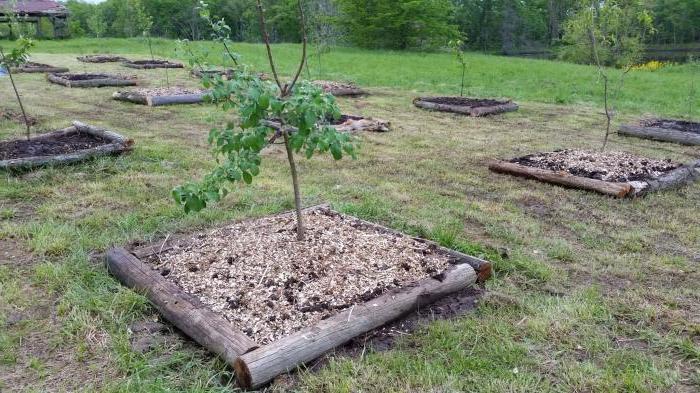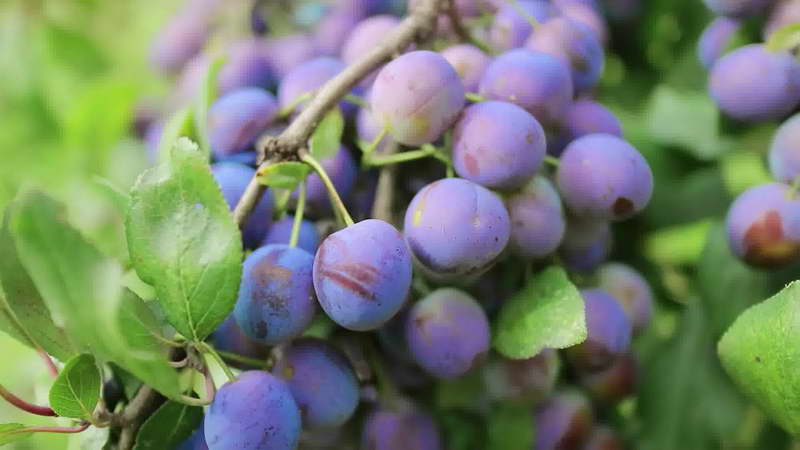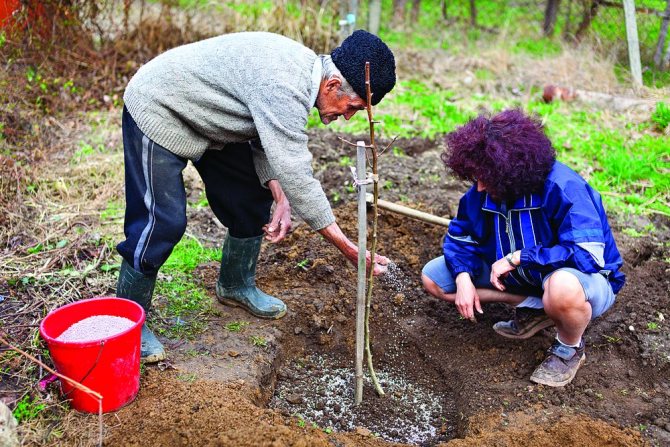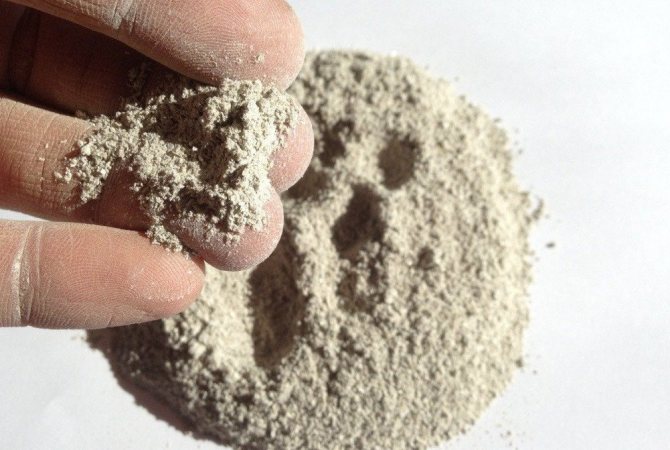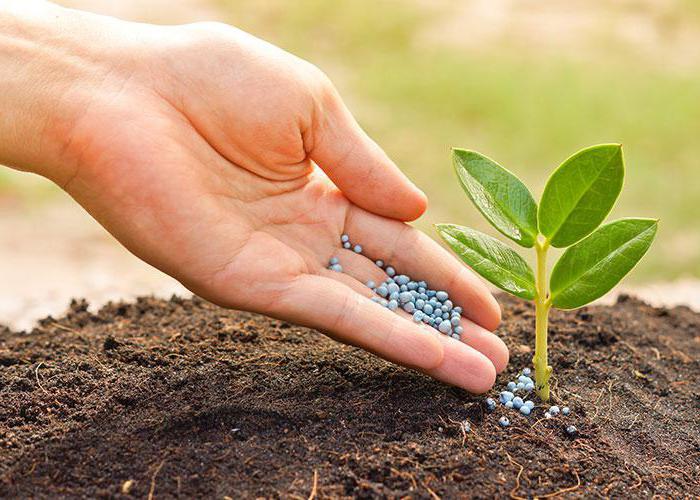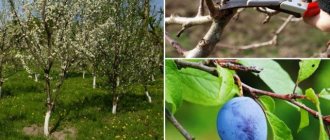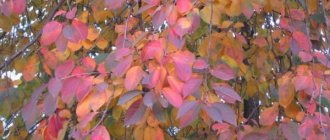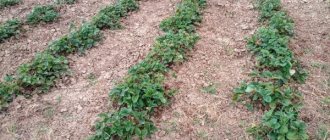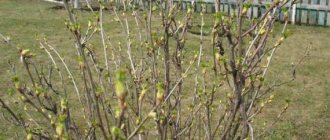
The cultivation of fruit plantations, including plums, requires proper care - timely watering, pruning, loosening of the soil and top dressing. This is the only way to grow a healthy garden and get a bountiful harvest of tasty fruits every year. The best fertilizers for plums in spring, summer and autumn are the topic of our article.
Pruning plums in autumn
Cropping rules are not complicated:
- Care for young plums in autumn is pruning. After planting the tree, the central shoot is cut by a third. Thanks to this technique, the crown will develop correctly in the future, the branches will be parallel to the ground, and not stretch upward.
- For medium and old trees, you need to regularly prune branches that thicken the crown, intersect with other branches that are damaged. Try to keep the branches parallel to the ground and remove the young twigs that grow vertically. It has been noticed that parallel branches give a greater yield and are better illuminated by the sun.
You can form the crown of a plum in two types:
- High central shoot, from which horizontally growing branches.
- A short central shoot from which large lateral branches grow.
Processing of boles
For the prevention of diseases of plums, cleansing from pests - the autumn preventive treatment of the lower part of the trunks is one of the most important things. Insects in the fall begin to look for cozy places for wintering. They fit perfectly under the flakes of the exfoliated bark. The larvae of beetles also tend to climb here. In such shelters, insect eggs can be found, molds and dangerous myceliums are taken here.
Before the onset of frost, you need to set aside time and put the stems in order. What is needed for this:
- Clean the bark with a hard metal scraper. With its help, exfoliated and falling off pieces of bark are removed. Remove lichens and fungi, moss and insects. They clean the bottom of the tree, branches.
- Treat infected areas with drugs to combat pathogens.
- If the passages left by the larvae are found, these places are sprayed with a remedy for pests of fruit trees.
- Fumigate.


Topping the plum
The root system of the plum is not very deep, and it is problematic for it to draw water from underground water streams during dry periods. Therefore, this crop requires abundant watering, including in the fall. Although you need to have a measure, since excess moisture will not benefit the tree. In order for the tree to prepare for the winter period, after dropping its leaves, in dry weather, a large amount of water is poured under it (up to 200 liters). After that, it is advisable to mulch with sawdust, straw or peat. This technique contributes to the moisture content of the soil. If significant rains fall during this period, special watering should be abandoned. Output. We have described what the autumn plum care consists of, and finally we submit a good video from an experienced gardener. You might be interested in:
https://youtu.be/ordzOZL2SxM
ukr
Features of growing stone fruit crops
In order to ensure a good harvest of plums for the next year, it is necessary to dig up the soil and at the same time apply the appropriate fertilizers. This procedure is carried out at a distance of one meter from the tree trunk.The soil should be dug to a depth of no more than 30 centimeters.
There are several types of fertilizers that are allowed to be applied under the plum in the fall. In most cases, it is recommended to use a mixture of humus, wood ash and superphosphate. Gardeners also advise adding small amounts of urea.
Plum belongs to the category of moisture-loving plants, therefore, it must be provided with abundant watering in the autumn. At this time, appropriate fertilization is required. For the procedure, it is advisable to use at least 35 liters of water. Watering is carried out until severe frosts. Otherwise, it can negatively affect wintering.
A variety of pests can be found under the hidden scales of the tree bark. To eliminate them, it is recommended to clean the tree trunk from scales. For this purpose, it is advised to use a special stiff metal brush. During this procedure, you should have a number of insecticides, the action of which is aimed at eliminating pests. If they are found, there is a need for mandatory spraying of the plant.
Preparing plums for winter consists in whitewashing the trunk, which provides protection from pests and limits the possibility of negative effects of sunlight on the tree in winter. For this procedure, it is optimal to use a solution of lime and mullein.
Plum is a hardy plant, but it needs proper shelter at a young age. In the northern regions, insulation is carried out constantly, regardless of the age of the tree.
Plum shelter for the winter can be carried out according to various schemes. The most common application is the mulching method. After digging the trunk circle, it is necessary to mulch it with humus. After the first snow appears, a snowdrift is made from it around the tree, which contributes to insulation.
Shelter of young plums is carried out according to a different scheme. This is because the trees planted this year do not need fertilization. That is why their insulation is carried out by whitewashing the trunk. And also around it you can wrap several layers of paper. The soil around the young plum is insulated with bags, which must be spread out and fixed with a small amount of soil.
If severe frosts are observed, then several layers of burlap must be used to insulate the trunk circle. The trunk circle should be covered with plastic wrap, which minimizes the negative impact of precipitation.
It is necessary to prepare the plant for wintering as carefully as possible. In this case, the characteristics of the region in which the tree is grown is taken into account.
Crop care consists in carrying out stimulating watering, feeding, digging up the soil and pruning. Also during this period, the plant is fertilized.
In the Volga region
In preparation for wintering plums in this region, the gardener needs to perform a number of specific actions - dig up the soil, apply fertilizer, whitewash and prune. It is also recommended to carry out stimulating watering.
In the Urals
In this region, the climate is not harsh enough, but it is still recommended to carry out warming of young plums here, since this ensures the highest quality plant survival. Stimulating watering is carried out in early autumn. In the Urals, it is recommended to carry out partial pruning of the plant.
In Siberia
This region has a rather harsh climate. That is why it is necessary to insulate crops, regardless of how old they are. In order to recuperate, the tree needs feeding. It is carried out immediately after shedding the foliage. It is strictly forbidden to carry out abundant watering, as this can lead to freezing of the root system and the death of the plant.
Many gardeners make gross mistakes when caring for plums in the fall.
For example, some of them do not remove foliage to warm the plant. But it is strictly forbidden to do this, since there can be a variety of diseases on the fallen leaves, which are actively developing after wintering.
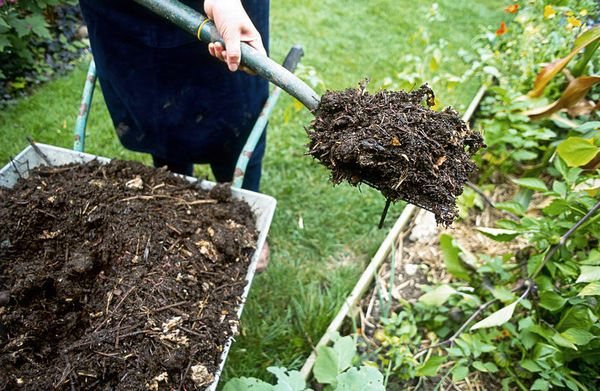

Gardeners do not clean plum boles. However, it is extremely necessary to remove moss, dead bark, lichens from them. If there are wounds, it is recommended to clean them. For processing with the aim of the fastest healing possible, garden var, copper sulfate, lime solution can be used.
Gardeners believe that it is not necessary to protect the plum from diseases and pests in the autumn. On the contrary, plums need protection from aphids and caterpillars, which are classified as dangerous pests. For this purpose, it is recommended to use an onion-garlic solution. Take several glasses of onion skins.
All components must be thoroughly mixed and filled with 5 liters of boiling water. It is recommended to insist the remedy for several hours. After this time, the product is filtered using gauze. After the solution has cooled down, the plum is treated by spraying.
In the autumn period, it is necessary to ensure proper care of the plum in preparation for winter. For this purpose, the gardener is advised to perform certain actions. Their order is determined according to the region of cultivation.
Foreword
What should be the care of plums in autumn so that the trees can withstand the winter cold? Consider what activities will need to be done in your plum garden.
For the winter, many of the pests hide under the exfoliated old scales of the bark. Insect larvae or eggs may also be hiding there. In addition, such "pockets" can become a refuge for mycelium polypores or mold, and subsequently become a focus of the disease. Before the onset of cold weather, it is imperative to carry out preventive cleaning of the boles, which will require a hard metal scraper brush.
Wood ash solution for spraying plums
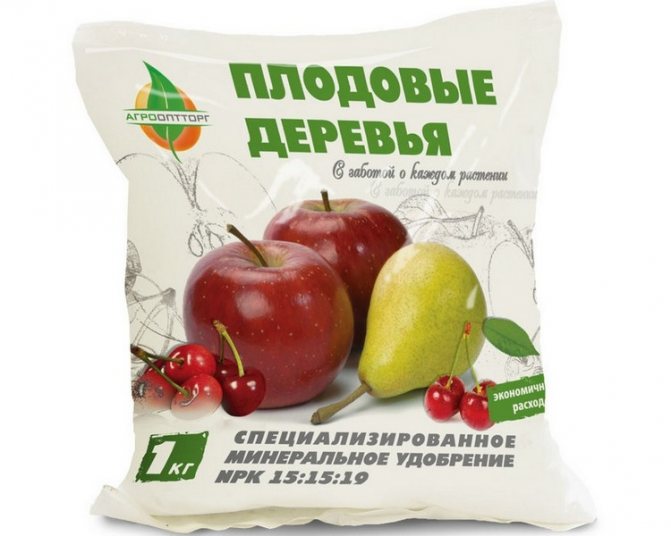

The next stage is preparing the plum for wintering, for which it is necessary to whitewash the trunks. This is done with lime, but the solution must be prepared correctly. Usually a solution is made with water in a proportion of 2 kilograms per 10 liters, but it lasts for a short time, although it helps against pests. A mixture of lime solution with 1 kilogram of clay will be much more effective, you can also add 0.5 kilo of mullein.
For plums, whitewashing should also have a prophylactic effect against clasterosporium disease, which means that about 3% copper sulfate should be added to it - this is about 300 grams per 10 liters of the mixture. Whitewashing sometimes makes it difficult for young trees to grow freely due to the tendency of the lime crust to shrink. You can use another solution: knead the clay, mullein and ash in a ratio of 4: 1: 1 and add water to make a thick "sour cream".
The purpose of autumn grooming is to prepare the plum tree for the cold winter season. The fruits have already been removed, and now you should thank your wet nurse. The main stages of autumn care are as follows:
- Top dressing. After the summer season, the plum tree needs fertilizing, consisting of minerals and complex fertilizers.
- Abundant watering. The plum tree, like no other, loves hydration. Therefore, drink it regularly with enough water.
- Loosening. The soil around the tree needs good drainage. Do not be lazy to dig up the ground.
- Warming. Autumn will fly by unnoticed, and frost will quickly come after it. To protect the trees from freezing, its trunks are carefully wrapped with roofing felt or roofing material.
- Protection. Protect the drain from damage by rodents and hares.To do this, on the territory of the personal plot, you need to lay out baits containing poisonous substances against mice. If you wrap plum poles with barbed wire, no eared can do irreparable damage to the surface of the bark.
Plum planting process in autumn
How often do we hear the complaints of gardeners that the planted plum trees for some reason do not bear fruit, or even die. And the reason lies not at all in a bad variety or low-quality seedling, the fault is in the wrong planting.
Therefore, we strongly recommend that you familiarize yourself with the main points of this simple, but extremely important process before the process of quickly and thoughtlessly burying a young tree in a prepared hole.
The sequence of the autumn planting of plum trees is in the following chronology:
- First you need to choose the right place for the future disembarkation. Give preference to a well-drained spot of soil. It is desirable that it is also moisture-retaining. Attention! The selected area should be well lit and also have a shelter from winter frosts.
- Thoroughly clear the land of various weeds, and fertilize it thoroughly.
- Now we move on to the next stage of the preparatory work - the landing pit. The standard size is forty by forty centimeters. However, each seedling has its own special root system. It is from her that the size of the pit for planting depends. Visually determine the size of the rhizome, and dig a depression in which the straightened roots of the young will be comfortably located.
- We take a seedling and carefully examine its roots, removing all damaged and crushed ends.
- We carefully lower the future fruit into the dug hole, and begin to slowly sprinkle it with earth. Make sure that the soil is evenly spaced without leaving any voids.
- Be sure to tie the seedling to a peg. This will save him from adverse weather conditions in the first period of his life.
- Provide the drain with abundant watering, she loves it very much.
Category: Pen stroke 03
When the plum is harvested, it would seem that the main care of this tree is over. But this is not the case. The tree still needs to be pruned, watered and fertilized. Here is about the autumn dressing of this fruit stone fruit tree and will be discussed below. Why do we need these top dressing, what fertilizers should be applied in the fall, and which microelements are no longer needed by the plum at this time - you need to know all this in order to help the plum to lay fruit buds and overwinter.
The tree needs autumn dressing in order to recover from the season and prepare for winter. Usually, in the first year or two after planting the seedling, top dressing in the fall is not needed because enough fertilizers have already been applied to the soil when preparing the pit for planting it.
Usually, feeding is carried out 10-14 days after the autumn pruning of the plum tree was carried out. And the plum is usually cut at the beginning of September. About two weeks after pruning, this stone crop needs to "come to its senses". If you apply fertilizer immediately after cutting the branches, then the tree will not be able to actively take the nutrients it needs from the soil.
In the fall, you should not carry out foliar dressing, since the foliage has already fallen, the sap flow in the trunk has practically stopped, so there will be no sense from such treatment. But the roots of the plum, like any other tree, grow year-round. Therefore, in the fall, only the application of fertilizers directly to the trunk circle is effective. The autumn feeding of plums is designed to increase their resistance to frost, and also contributes to the laying of fruit buds, from which a new harvest of berries will develop in the next season. Since the tree itself is already practically dormant, it does not need fertilizers containing nitrogen. After all, nitrogen activates the growth of branches and vegetative mass, which is useless for fruit trees in autumn.
Therefore, in the fall, nitrogen fertilizers are not included in the top dressing.
Forms a crown
Pruning and feeding plums in the fall is done in order to get excellent results next year. For a tree to develop properly, it is necessary to form its crown. The crown should be medium thickened, the height of the tree is not more than 2.5 meters. After reaching this size, the central conductor must be bent, tied to the lower branch. Branches growing inside the crown are cut “on a ring”, removing all shoots that form an acute angle. Annual shoots longer than 70 cm are shortened by 1/3. All others are left unchanged. Pruning too vigorously can prevent the tree from producing a good harvest because too few fruit buds will be laid.
Plum care in autumn video
Autumn feeding is done with the following solution - 45 g of phosphate fertilizer and 30 g of potassium sulfate are taken in a bucket of water. At least three buckets of such fertilizer should be applied under each tree. Such fertilizers can be applied not only as a solution, but also dry. Dry mineral fertilizers are applied to the soil before the autumn digging, they are scattered along the near-stem circle, focusing on the width of the plum crown - its root system usually grows in the near-stem circle to the same width as the crown.
Once every 5 years, in addition to phosphate and potash fertilizers, in the fall, rotted manure is also introduced into the trunk circle.
In the article, we will show what the care of a plum in the fall is, how to cut a plum in the fall and how the plum is treated in the fall from pests and diseases. Plums are very popular with summer residents, because they give delicious fruits that can be eaten raw, cooked compotes from them, dried for the winter and even get thick and nutritious juices. But you can consistently hope for a good harvest and not have big problems with pests and diseases when all agrotechnical measures are carried out in a timely and correct manner. We will briefly describe what the plum care is after harvesting, and you just have to repeat.
Proper watering and hardening
With the onset of autumn, gardeners stop watering fruit plants, believing that they no longer need water. This is wrong, as watering in the fall helps to harden the plum. The optimal period is the third decade of September. At this time, the watering rate is increased. Each tree will require 18-24 buckets of water. If the autumn is very rainy, then it is recommended to refuse watering, since excessive moisture leads to insufficient maturation of the wood. This greatly affects winter hardiness. In a rainy period, you need to make branch grooves or cover the near-trunk circle with a thick film.
Pruning plums in autumn
Most fruit trees require regular pruning. This makes it possible to remove damaged, weak, broken off branches. In addition, pruning forms the correct crown, it is better illuminated by the sun, and there are no pests in it. When is the best time to prune the plum. In temperate latitudes, experts advise pruning plums in the spring, not in the fall. Pruning plums in autumn is possible in southern areas with mild winters. In any case, pruning should be completed long before the onset of winter, so that the cut points have time to tighten.
Cropping rules are not complicated:
- Care for young plums in autumn is pruning. After planting the tree, the central shoot is cut by a third. Thanks to this technique, the crown will develop correctly in the future, the branches will be parallel to the ground, and not stretch upward.
- For medium and old trees, you need to regularly prune branches that thicken the crown, intersect with other branches that are damaged. Try to keep the branches parallel to the ground and remove the young twigs that grow vertically. It has been noticed that parallel branches give a greater yield and are better illuminated by the sun.
You can form the crown of a plum in two types:
- High central shoot, from which horizontally growing branches.
- A short central shoot from which large lateral branches grow.
Plum fertilization
After harvesting, the plum needs additional feeding, because after the fruiting season the tree is weakened and needs support in order to successfully survive the winter. To do this, dissolve 3 tbsp. spoons of superphosphate, 2 tbsp. tablespoons of sulphate (or chloride) potassium a bucket of water. Three buckets of such a solution per tree is the optimal amount to nourish the tree and get a good harvest next season. For a 1-2 year old young plum tree, additional feeding is not needed if organic or mineral fertilizers were introduced into the pit during planting. Plum care in September, even before harvesting, consists in feeding the trees with compost (10-15 kg under the tree).
Pest control
Autumn is the most convenient time to deal with the destruction of insects that threaten to drain. Now they are busy with the problems of the approaching cold weather - they are looking for places to hide. As soon as all the plums are removed, you can declare war on the pests. The most suitable time for this is the period before the start of massive leaf fall.
It is useful to know that phosphorus-potassium preparations also help in the fight against stubborn aphids. When they are brought under trees, they are not only a top dressing, but also a means of fighting harmful insects.
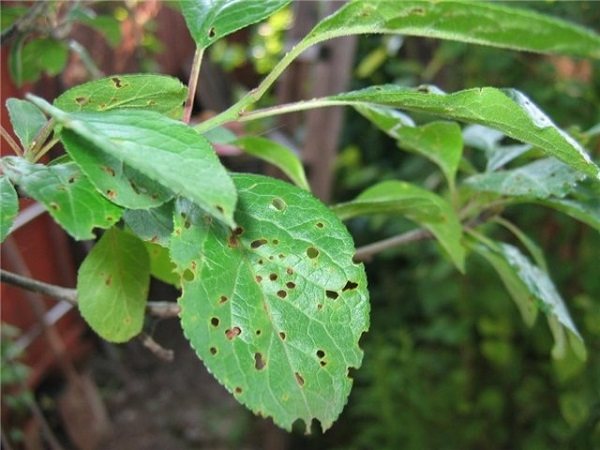

How to deal with aphids naturally
To destroy aphids, you will need half a bucket of onion husks. Always save this valuable product after harvesting onions. It can still be useful for many things. Water 60 degrees is poured into the bucket to the top. Leave to brew for two days. After the infusion is filtered and diluted with water. There should be twice as much water. Plum leaves and branches are processed. An excellent insect repellent is wood ash. For 10 liters, 2 kg of ash are added to a bucket of water, diluted well, insisted for 2 days. Sprinkle plums.
Parsley and cumin act as an attractive remedy for hoverflies. Beneficial insects destroy aphids. In the fall, it's time to sow these crops with winter sowing.


Topping the plum
The root system of the plum is not very deep, and it is problematic for it to draw water from underground water streams during dry periods. Therefore, this crop requires abundant watering, including in the fall. Although you need to have a measure, since excess moisture will not benefit the tree. In order for the tree to prepare for the winter period, after dropping its leaves, in dry weather, a large amount of water is poured under it (up to 200 liters). After that, it is advisable to mulch with sawdust, straw or peat. This technique contributes to the moisture content of the soil. If significant rains fall during this period, special watering should be abandoned. Output. We have described what the autumn plum care consists of, and finally we submit a good video from an experienced gardener. You might be interested in:
ukr
Complex preparations
A good tree usually produces many ripe and tasty plums. But this is an extremely energy-consuming process, so now the plant requires real care. An excellent choice would be the Yagodka complex fertilizer. It is diluted in proportions of 300 g per 10 liters of water. It can be applied to the soil at the stage of flowering and ovary formation.
After that, when the fruits are poured, the complex fertilizer "Berry Giant" goes very well. In fact, this is an analogue of a mixture of urea and nitrophoska. But during the ripening of the fruit, chemistry is not used. From organics, it is preferable to use a solution of chicken manure. One part of it accounts for 20 parts of water.
Top dressing of plums in spring
As soon as the sun begins to warm up in spring, the trees come back to life in the garden. One of the first to be covered with lush white flowers is the beautiful plum.But it often happens that after active flowering, the tree simply lacks strength to lay fruit. In order for the plum to bear fruit, in the spring it will need competent care, in particular, top dressing.
How to fertilize plums in spring?
So that feeding the plum in early spring would only benefit the tree, it is very important to clearly understand the mechanism of operation of all its systems during this period. During flowering, the plum still has practically no opportunity to receive the nutrients it needs in the usual way: the leaves have not yet unfolded, and the roots are functioning at half strength due to insufficient heating of the soil. Therefore, care for the plum in early spring should be aimed primarily at attracting solar heat to its root system. It is simple to achieve this goal: it is enough just to mulch the trunk circle with a thick layer of rotted manure or any other organic matter, after slightly loosening the ground. The resulting mulch pillow will serve two services at once: firstly, it will saturate the tree with nutrients, and secondly, it will warm the soil in the near-trunk circle.
Over time, when the ground is fully warmed up, it will be possible to decorate the manure layer by sowing some of the green manure or seeds of unpretentious flowers in the trunk circles. Another way to feed the plum before flowering is to water it with a solution of organic fertilizers (in a ratio of 1/9), and then mulch the soil with sawdust or peat. To achieve the maximum effect, you can use mineral fertilizers for early spring feeding, alternating them with organic ones: fertilize the plum with organic matter one spring, and the second with a mineral complex. Having taken all measures to protect and activate the root system, they move on to the ground part of the plum, namely to foliar dressing. If the naked eye can see that the tree is in a depressed state, or if the growth of branches is less than 40 cm per year, in the spring the plum must be fed with a solution of urea (40-50 grams per bucket of water) or ammonium nitrate (20 grams per bucket of water).
Top dressing of young plums in spring
Caring for young plum trees has its own characteristics. So, in the first year after planting, plum saplings are not fed at all - they have enough supply of nutrients that were laid in the planting pit. Moreover, excess fertilizing can only harm a young plum - the root system will only develop to such an extent by autumn to begin to absorb fertilizers. As a result, during the period when the tree must prepare for wintering, it will begin to actively grow and release new shoots. As a result, the plum will enter the winter weakened, and may die at the first frost. To prevent this, they begin to feed the seedling only from the second year after planting.
The second year of the plum's life passes under the sign of nitrogen support - after budding, the tree is fed with a urea solution, diluting it at the rate of 2 tablespoons per bucket of water and spending 25-30 liters of solution for each tree. When the plum enters the fruiting season, its spring feeding looks like this: before flowering, a liquid solution of urea and potassium sulfate, dissolved in a proportion of 2 tablespoons per bucket of water, is introduced into the trunk circle after digging. This mixture can be replaced with Berry fertilizer by dissolving it in a proportion of 300 grams per bucket of water. After fertilization, the trunk circle is carefully mulched with a layer of peat or sawdust.
Nuances of tree nutrition during the period of ovary and fruiting
To feed the plum, it is necessary to take into account its age and development period. But many make mistakes that can lead to the death of a culture.
Before flowering
Vegetation is one of the most important stages in obtaining fruits. Before budding, a mixture of 1 part manure and 2 parts water should be used. Water the area around the plum with the resulting liquid, stepping back 30 cm from the crown.
It is important to apply a urea solution before inflorescences appear. Spray the culture with them at the rate of 10 liters per plant.
After the flowers fall
After the inflorescences fall, fertilizers are used taking into account the type of soil and the variety of plum. Features of feeding:
- mineral fertilizers will help reduce the risk of developing the disease;
- poultry manure is often used as organic matter.
Top dressing in the first month of summer is carried out using saltpeter. The granules must be scattered in the root area and dug up with the ground. Thanks to this, the plum will receive useful components for a long period.
Fruit ripening
In the middle and late summer, fertilization is also necessary, since the tree loses a lot of strength and nutrients to ripen the fruit. Therefore, it is often at this time that you can see a culture with yellow foliage or affected by diseases.
It is important to examine the plum for signs of nutritional deficiencies before applying fertilizers. If the first symptoms appear, then measures should be taken immediately.
If a decision is made to use copper sulfate, then it cannot be mixed with other substances in order to avoid burns on the branches.
Fall also needs to feed the plum to strengthen it and help it form new buds in the spring.
How to feed plums in autumn?
Plum feeding is one of the most important elements of tree care. In September, you need to devote time to this so that next year you can reap a rich harvest. So, let's figure out what exactly the plums are fed in in the fall.
Mixes for feeding plums in autumn
Autumn feeding of plums differs from spring feeding, so it is important to know what will be the right way to fertilize plums in autumn. Remember that the tree loves the alkaline type of soil, so you need to scatter ash near the post or pour it with lime mortar. The plum is also fertilized with an ammonia mixture. Of course, it is better to do this even before the fruits ripen, so that they are juicy.
Let's look at what you need to feed the plum after harvesting, because it is during this period that the tree is weak and prepare for winter. You can fertilize the soil with these types of mixtures:
- Organic blends.
They improve the development of the root system and restore it.
Gardener mistakes
Gardeners often make mistakes when growing plums at the stage of feeding them. First of all, they abuse fertilizers, which is bad for the tree: its condition and yield. To avoid such situations, it is important to always follow the instructions and not exceed the permissible dosage.
Another mistake is the use of expired fertilizers. To get the desired result, the funds must be fresh.
Feeding plums in spring is easy. It is only necessary to choose the right fertilizer, adhere to the algorithm of the procedure and adhere to the recommendations of specialists.
Scheme of pruning plums in autumn
Also, such mixtures affect the growth of the tree.
Introduced into the soil to improve fertility. It is important not to overdo it, do everything according to the instructions, then next year the plum will surprise you with a rich harvest.
If the plum grows on sandy soil, then do not use this type of subcrust, otherwise the air will not pass to the root system.
Of course, it is used for the regeneration and growth of the tree. It is important to know that plums are fed with this type of fertilizer three times a year. The fourth feeding with urea can be harmful.
It is necessary to feed the tree in warm weather, preferably before the start of frost. The amount of fertilizer applied for plums should not exceed the norm, because the plant may not survive until spring. If it grows for the first year, then one type of feeding is enough, which is diluted in 10 liters of water. Well, if the tree is more than three years old, then you can use all three, but not more often than once a week. After feeding, cover the soil around the tree with hay or fallen leaves.Also, the tree itself will help you determine what fertilizers to apply under the plum in the fall. Pay attention to how much it has grown over the season, the soreness and the amount of the harvest.
Deficiency signs
If there is not enough phosphorus, then the leaves become grayish. The tree generally grows well, but the fruit looks pretty miserable. If you notice such changes, then you already know how to feed the plum in the fall. How you can see from its appearance what the tree needs especially urgently:
- Magnesium deficiency can be identified by the brown edging of the leaves.
- Potassium deficiency leads to a slowdown in shoot growth.
- In the absence of nitrogen, premature fall of leaves and ovaries is observed.
If you carefully examine your plantings, you will be able to understand by one reason or another how to feed the plum in the fall. But this does not exclude the need for complex fertilization.
